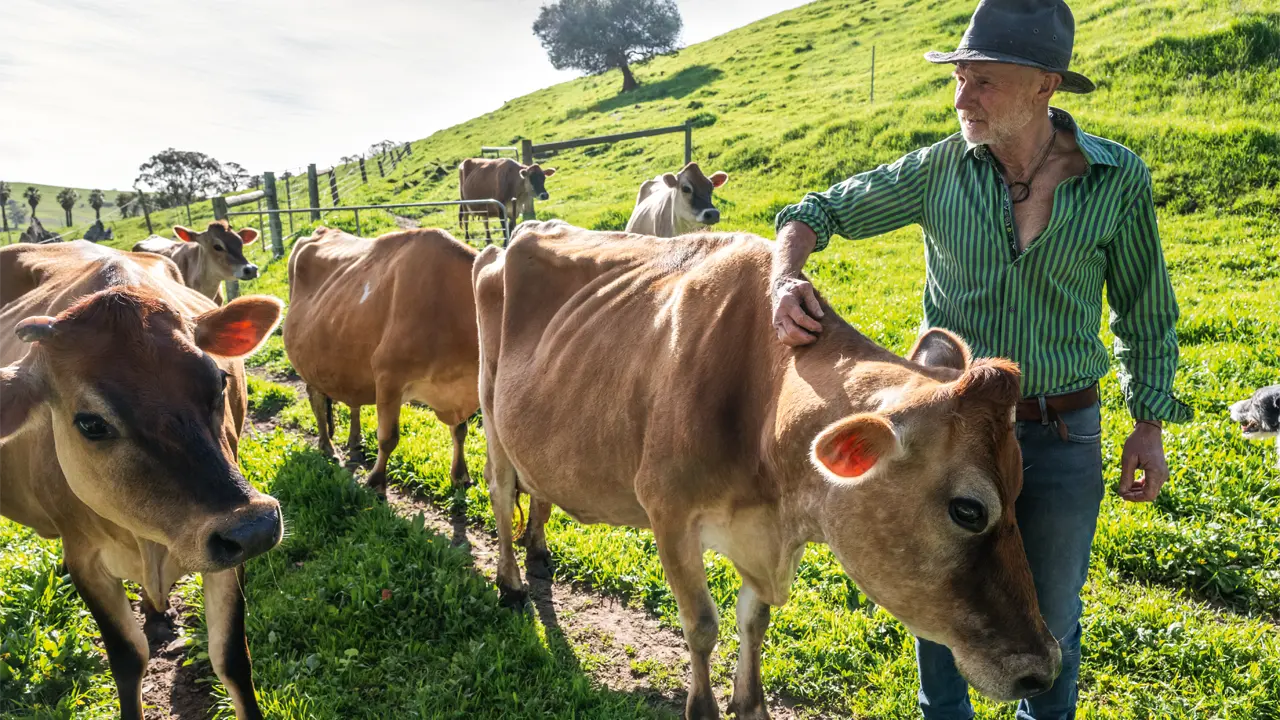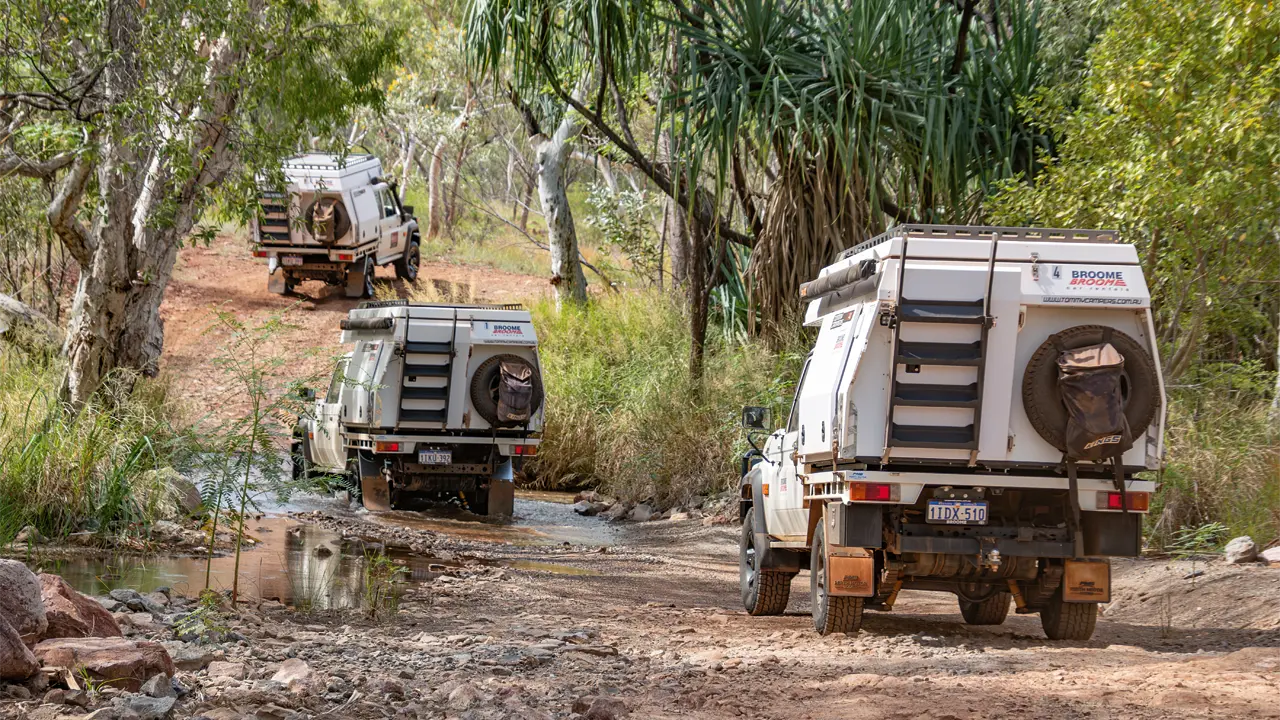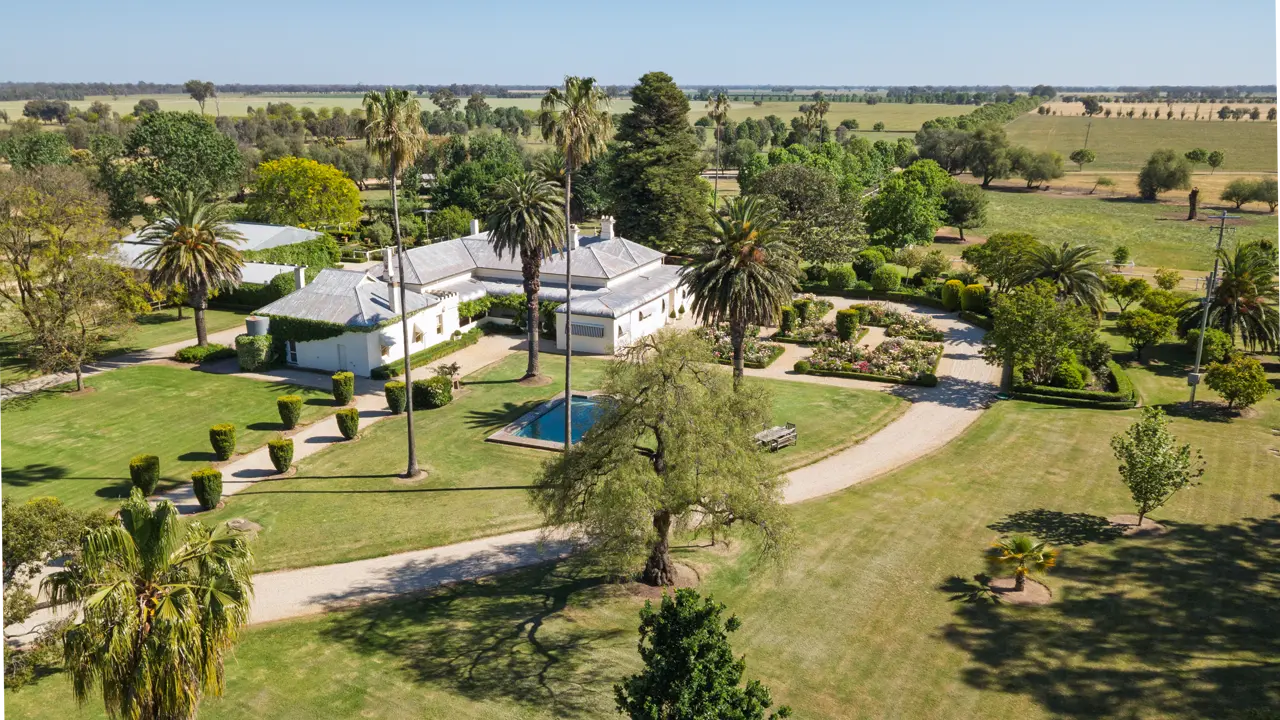Muster time on Dunbar Station gives manager Peter Hagan and wife Debra a chance to reflect on the changing face of the outback.
Story by Ian Glover Photos by John Denman
Dawn on Dunbar Station in Queensland’s Gulf Country. The horse transport – a battered Blitz Buggy hand-painted a decidedly unmilitary red – pulls up on the side of the road and the ringers pile out. They move slowly, perhaps because they returned from a bit of R&R in Cairns only a couple of nights before, more likely because they don’t want to spook the horses, already keyed up, stamping in the tray. In auroral light, the horses snort through their nostrils as the ringers, one by one, gently guide them down the ramp to form a quiet circle. They’re all young, these blokes; 17 through to early 20s, lean and tanned. In Cuban-heeled riding boots, checked shirts and jeans, and sweat-stained, worse for wear Akubras, they stand casually, almost motionless, in that relaxed, hip-thrown-out stance that typifies outback rural Australia. It’s like an opening scene for an Australian version of Young Guns – all that’s missing are the Colt .45s. Dunbar’s muster is about to begin.
One of the few big Australian cattle properties still privately owned (by the McDonald family), Dunbar sprawls over 3000 square miles in the old money – almost 777,000 hectares – and runs around 35,000 head of Brahman cattle. The old Queenslander homestead – a massive two-storey structure painted green, cream and white – sits on verdant lawns, surrounded by bougainvillea, coconut palms, mangoes and Leichhardt trees. Raptors wheel in the air overhead, and the ‘Gulf Orchestra’ plays constantly all day; the caw of crows, a bowerbird chirruping as he courts, insects buzzing and droning, whirring wings and the shriek of whistling kites playing a counterpoint to the piercing cries of galahs. Occasionally, a sacred kingfisher hops silently and intently across the lawns. Behind the homestead the Mitchell River, on its way from the Great Divide to the Gulf of Carpentaria, is home for both Johnson River and saltwater crocodiles.
“We lose a few stock, but not many,” says manager Peter Hagan, in a voice that sounds like river gravel being shovelled into a bucket. Raised on Muckaty Station on the outskirts of the Tanami Desert, Peter was educated in Adelaide and started his rural career from the bottom – as a ringer. A tall man who’s obviously used to calling the shots, after two years in agricultural college after school, he joined Stanbroke at “Fort Constantine”, near Cloncurry, then shifted to Avon Downs, out of Clermont. Over the years, he’s worked for a number of outfits, including AAco (Australian Agricultural Company), Rapisarda, Western Grazing and private company Haywards.
His quietly spoken, quick-witted wife Debra has a far different background. Born in the UK, she studied nursing, specialising in midwifery. After reading an ad for nursing opportunities in Australia, she landed in Darwin in February 1986 to face an immediate nightmare trip by bus to Alice Springs overnight. She met Peter on a visit to Brunchilly Station after transferring to work in Tennant Creek, where she had bought a painting done by Peter’s mother Miriam, quite a renowned artist in the Territory. “The locals made me feel quite at home, particularly Peter’s family,” Debra says. “A couple of years later, I got Australian citizenship – just the mayor of Tennant Creek and me. I didn’t even get a tree to plant!”
Their children – Samantha, 15, who attends boarding school in Townsville, and “the young bloke” Matthew, who has just started boarding school in Townsville after being schooled through Distance Education – were born as the couple moved around. Peter and Debra lived the first years of their married life on AAco property Rockhampton Downs, off the Barkly Highway. Two years were spent as assistant managers at Canobie Station in the Gulf with AAco before they became managers of Woodhouse Station in the Burdekin country. They stayed for 12 years before a complete change of climate in the move to “Tanbar” in the Channel Country, where drought was a constant spectre. “Deb took me over to England to have a look around, and I reckon I’d like to live there – it rains all the time,” Peter says. The lure of more reliable rainfall was only one of the factors that made them want to come to Dunbar, moving into the homestead in March 2006.
A balmy Gulf evening: Pete and Debra sit at the table under the portico outside the house, sipping XXXX Gold (now almost currency in outback Australia). Cane toads appear from nowhere and the babel of insect chatter is a constant, humming backdrop to conversation. The power generator can’t even be heard, thanks to massively thick sound insulation on the shed walls. “This is a good place,” Peter says reflectively. “We’re really just carrying on the work of Gordon and Maxine Hamilton. They’ve retired to Karumba and were managers here for 17 or 18 years – they did a fantastic job.”
The McDonald family has plans for improvement and expansion on Dunbar over the coming years. Part of the immediate work is replacing old wooden yards with steel, and the task of demolishing falls to a crew of young ringers genially ‘press-ganged’ from another McDonald property, “Devoncourt”, on the Cloncurry-Dajarra road south-east of Mount Isa. An enthusiastic bunch, getting the job of demolishing the old yards done in half a day, they’re from all over rural Queensland: Malcolm Hill is from the Cloncurry district, Campbell Bird from Rolleston, Hugh MacDonald from a property outside Blackall, and the head man, Andrew Gale, from Wandoan, north of Miles on the Leichhardt Highway. Naturally, they stay on for the muster.
“One of our real problems is getting young people to come out here to work – they just don’t see it as a career,” Debra says, which is certainly surprising judging by Peter’s own experience. Water is certainly not a problem on Dunbar. “Besides the river, there are plenty of flowing bores, with poly pipe leading to troughs,” Debra says. Feral animals are generally not a problem either. “We get a few pigs, but not many, and a few brumbies,” Peter says.
A horse-lover, Debra raised a brumby on “Woodhouse”. “Peter brought him home with the umbilical cord still on,” she says. Indeed, horses play a pivotal role in the muster. “Well, big day tomorrow,” Peter says. “We’re bringing in about 40 horses and, for the muster itself, I’ll use six or seven staff in addition to a similar number with Russell and Cheryl Ryan – they run the contract mustering team.”
Peter then explains the mechanics of the muster. “We’ll have bikes (they sit on the tail of the mob), horses and a helicopter,” he says. “Everyone – even the riders – will be linked by radio. The chopper saves a lot of riding and can cover a lot of country quickly.”
The conversation continues over a dinner of flavoursome Brahman steaks and vegetables. “We love it here” Peter enthuses. “The people, horses, the environment, peace and quiet, no close neighbours.” The nearest property is Koolatah, 18 kilometres away as the crow flies over the Mitchell.
“Station life is great for kids,” Debra says. “Lots of space to run around in, animals to care for, helping out on the property. They mix with adults from an early age and therefore relate to adults easily, helping their self-confidence.”
But there are downsides, some felt more keenly by Debra than Peter. “Matthew has been taught by me and governesses for the past year, where he’d previously been at school,” she says. “He missed his friends, despite letters and phone calls. The kids are so far away and, if we get flooded in, we’d have difficulties in getting them home for holidays; they would have to be flown into the property.
“But computers have made communication easier. If you can’t get someone on the phone, you can email.” Technology isn’t the only thing that’s evolving. “The attitude to women in the country has changed too,” Debra says. “It was still old-fashioned when I started to live on stations. Especially once married, women should stay at home and do crafts, cooking and gardening and so on. I loved animals, being outdoors and working in the stock camp when I could. If you work on the property then, when you come to help manage a place, you have a greater understanding and rapport with the people you work with and of any problems that may arise. Women now work on many stations and there are no raised eyebrows.”
Early afternoon: a somnolent torpor hangs invisibly over Dunbar. Debra is in the kitchen preparing food for yet another meal. Cook Michelle Williamson quietly feeds poddy-calves down near the river. Originally from Melbourne, Michelle is a trained gardener, and went to work in that capacity at Alroy Downs on the Barkly Tableland. A stint jillarooing at Rolleston preceded coming to Dunbar. She loves the area and, with partner Clint’s parents living at Mount Carbine, points out that it’s nice to be close to family.
The feeling of lassitude is shattered by the clattering arrival of a Robinson 22 helicopter, which sets down on the lawn near the homestead. After the blades stop rotating, a swag is thrown down and Mitch Ballantine jumps out. He’s young, keen and an excellent pilot. Shortly afterwards the horses arrive, driven by a couple of quads in the hands of brothers Clint and Vince Booth. Things don’t go strictly to plan. Distributing round bales in the horse yard, the forklift bogs down in the soft, sandy soil as the horses gallop in. They mill around the gate, the quads keeping them bunched up until finally the forklift is extricated and the horses rush in. Tomorrow, they’ll earn their keep.
Muster: the day starts early as guttural diesel LandCruisers fire up around 5.30am. Even at dawn, it’s a typical dry season Gulf morning, with heat and humidity sitting still on the shoulders, oppressive and heavy. It’s dead quiet; just magnetic anthills and dried grasses immobile under a sky so blue it looks solid. The reverberating whirr of blades segues into the scene as the Robinson bursts over the treeline. Suddenly, the mournful lowing of cattle on the move and clouds of dust signal that the muster is well underway. Gradually, like turning up the volume on an iPod, bikes bark as throttles are revved. Matt Donahue (a tall streak in the saddle, looking like a character in a Russell Drysdale painting) cracks his stockwhip repeatedly. Radio static is interrupted by shouted instructions. The ground thunders as cattle – mostly heifers and weaners – trot across scrubby plains. Riders, led by head stockman Matthew Dench, are behind them, beside them, streaking away at full gallop to round up recalcitrants. With dust billowing, far-strung Brahmans, with their ghostly faces and eyes like holes cut in a sack, merge with other mini-herds. It’s the total outback cliché, but what eventually becomes 3000 head on the hoof is an unforgettable sight and sound. Finally, at around 4.30pm, the cattle are herded into the yards near the homestead. Time for a wash and a well-earned beer.
This story excerpt is from Issue #52
Outback Magazine: Apr/May 2007








